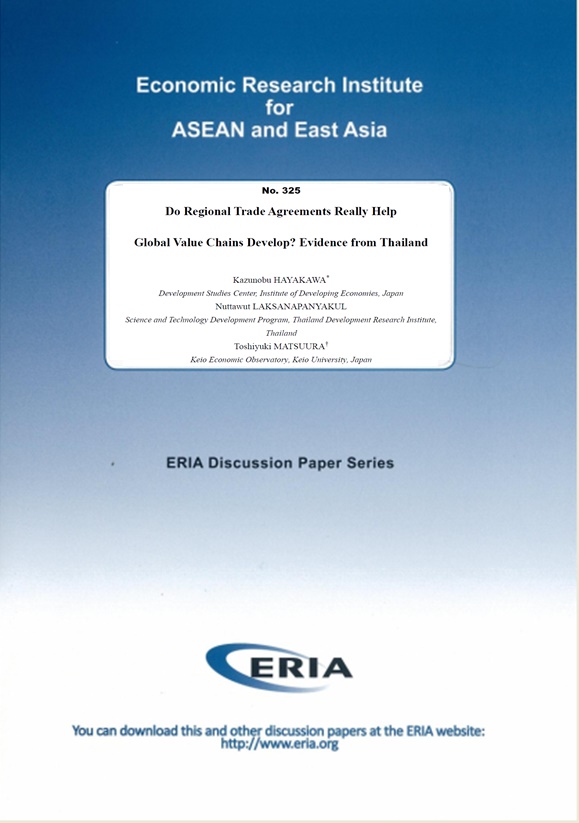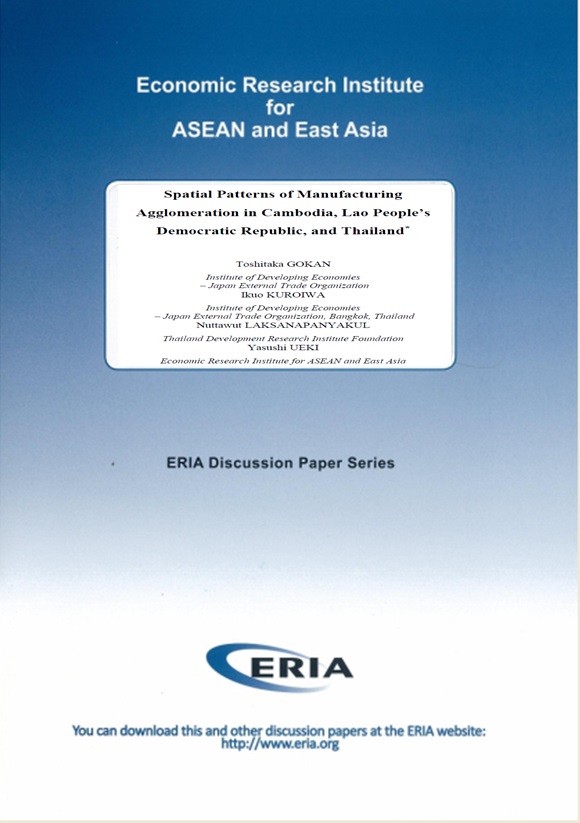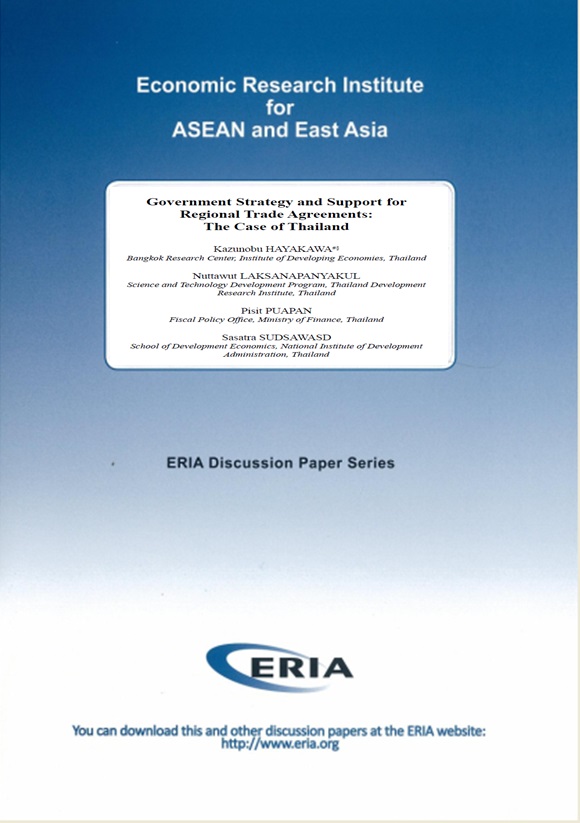Do Regional Trade Agreements Really Help Global Value Chains Develop? Evidence from Thailand

Date:
4 March 2020Category:
Thailand, Global Governance and Multilateralism, TradeType:
Discussion PapersTags:
Thailand, Trade, Exports, Imports, Regional, global value chains, free trade agreementPrint Article:
This paper examines the firm-level nexus between exporting and importing by using firm-level data from Thai customs. We differentiate firms’ imports according to the tariff regime used (e.g. regional trade agreements (RTAs)). Our finding is that imports under RTA regimes have a small, though significant, correlation with exports. Greater exports are found in firms with larger imports under the most favoured nation or other preference regimes (e.g. duty drawback for raw materials imported to produce export products). One reason for the result in RTA imports is that active RTA importers mainly target the domestic market rather than the export market. If the main market is abroad, firms tend to use other preference regimes. Thus, the other preference regimes may contribute more greatly to the development of firm-level back-and-forth international transactions than RTAs do.
Full Report
Do Regional Trade Agreements Really Help Global Value Chains Develop? Evidence from Thailand




